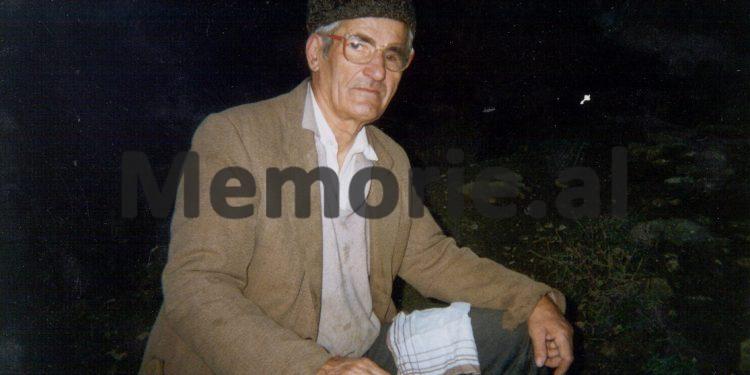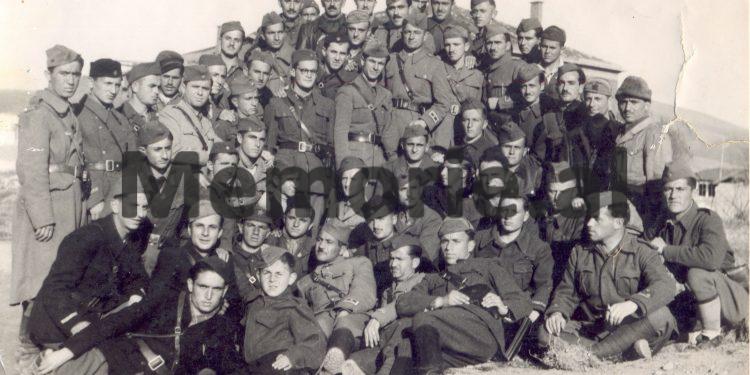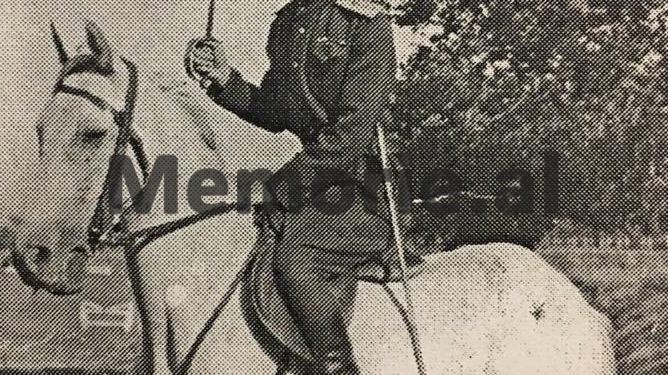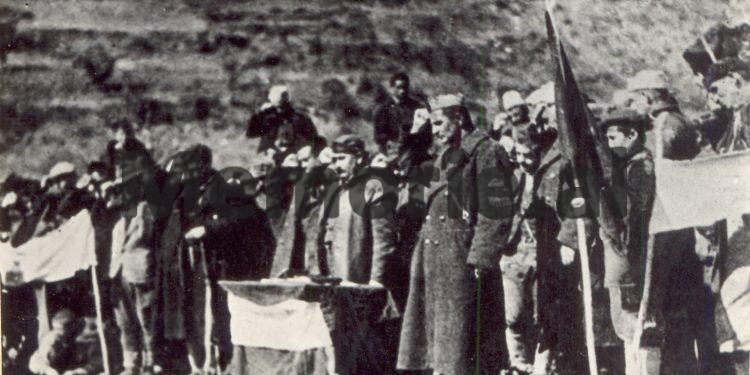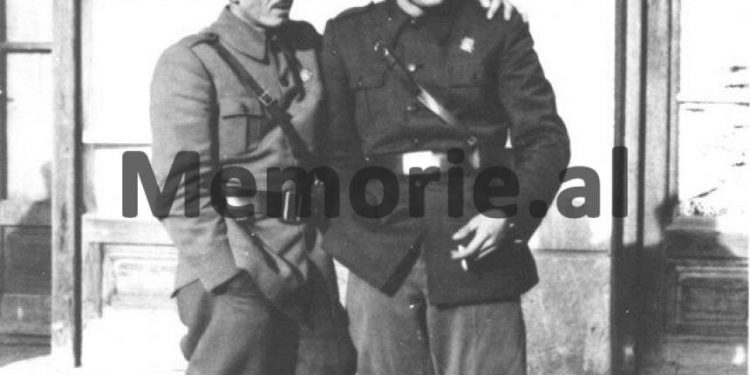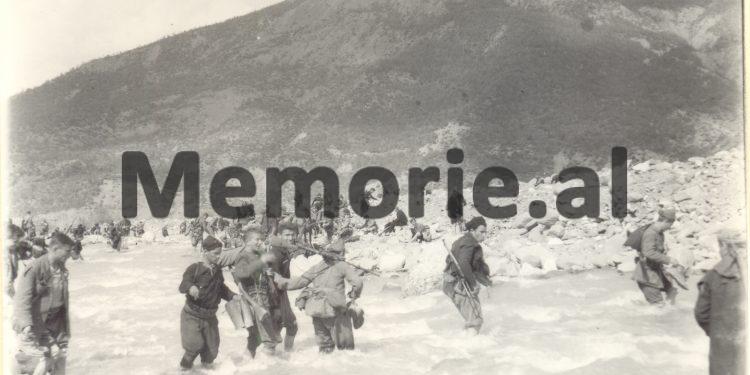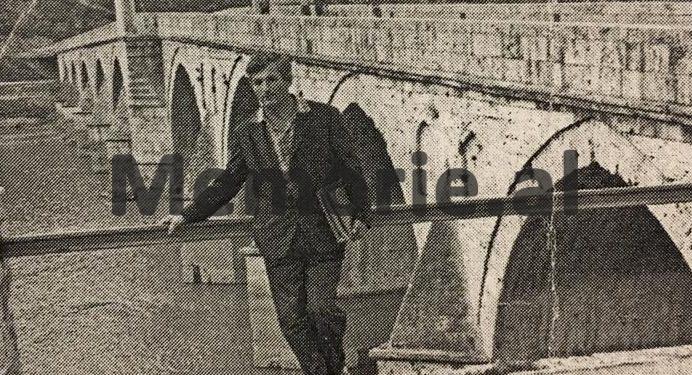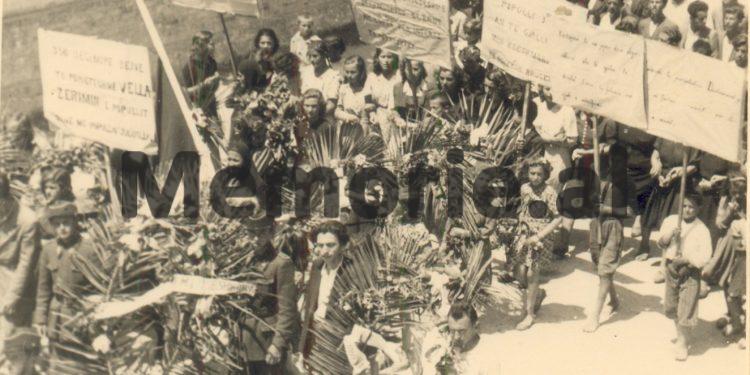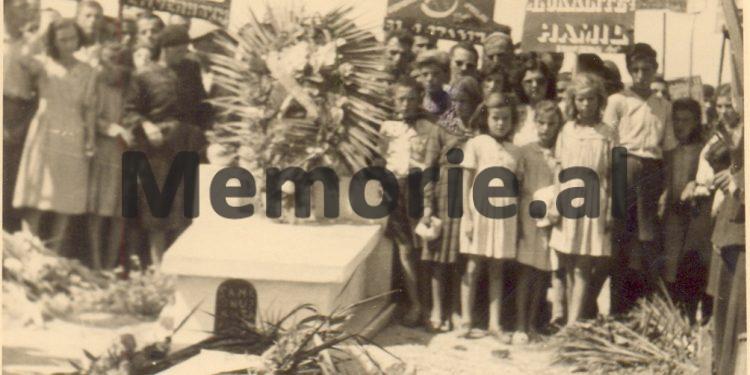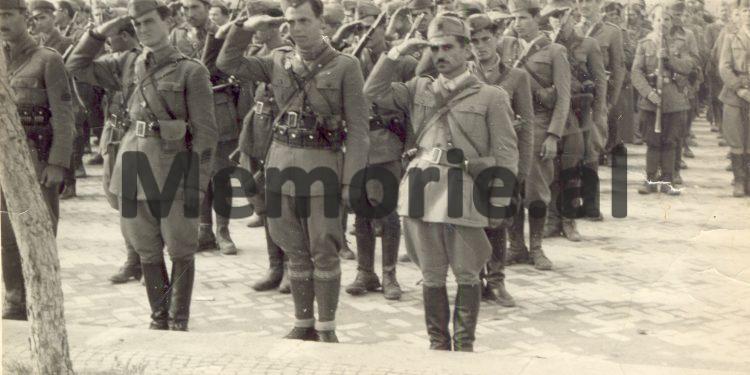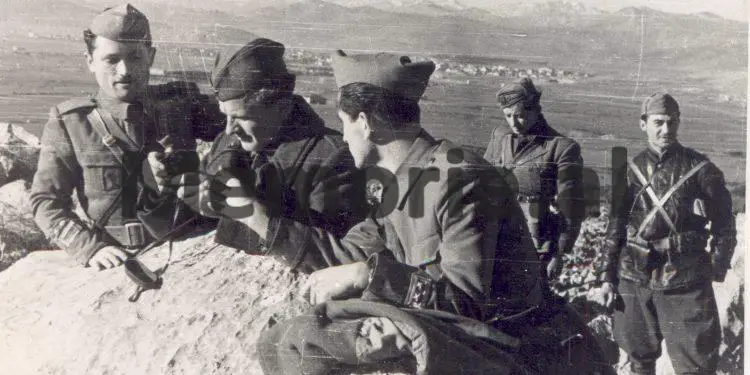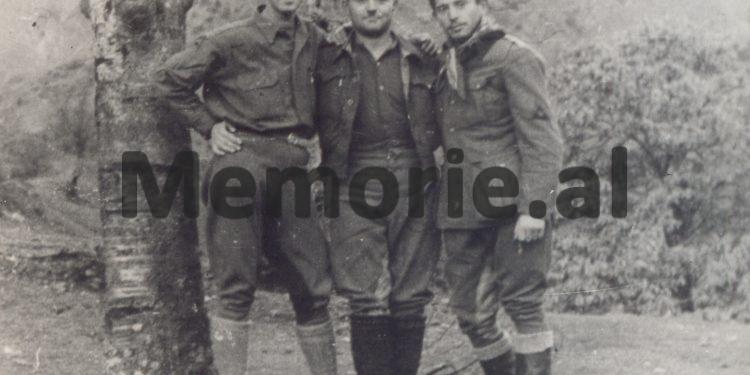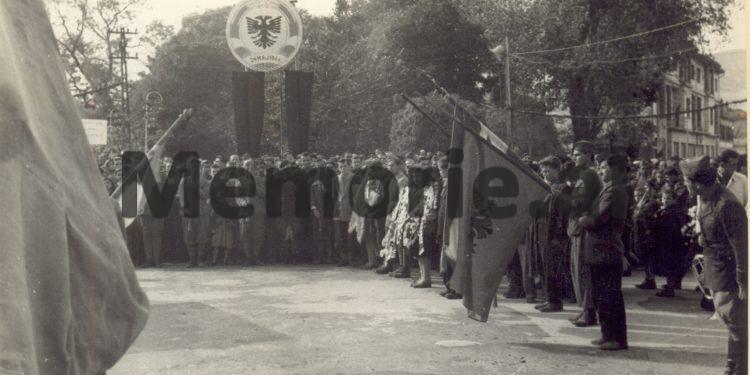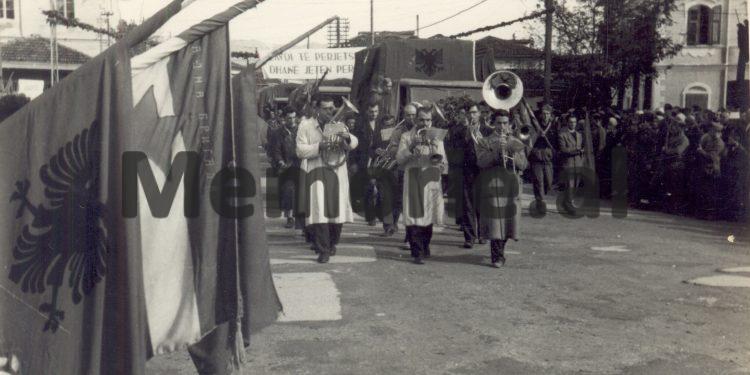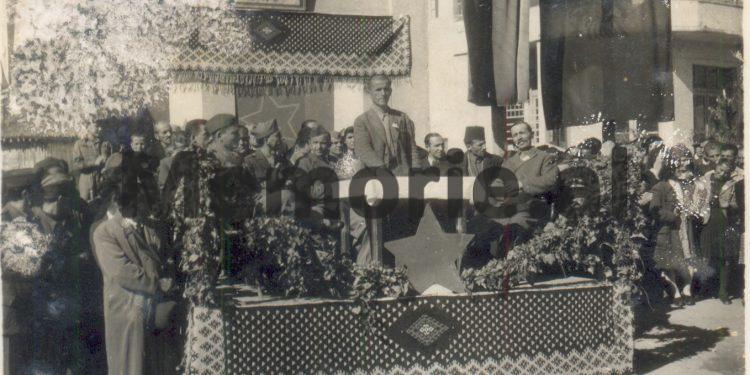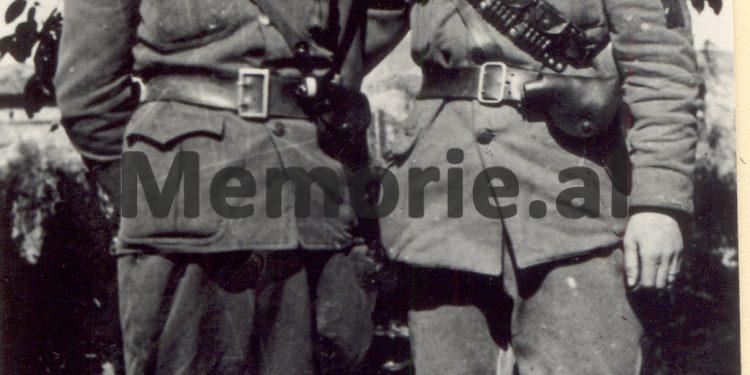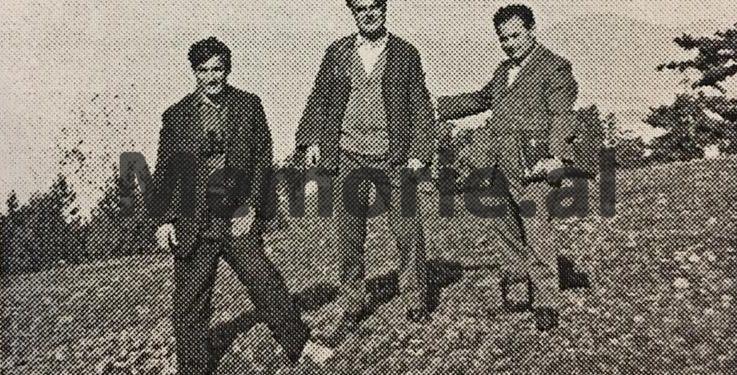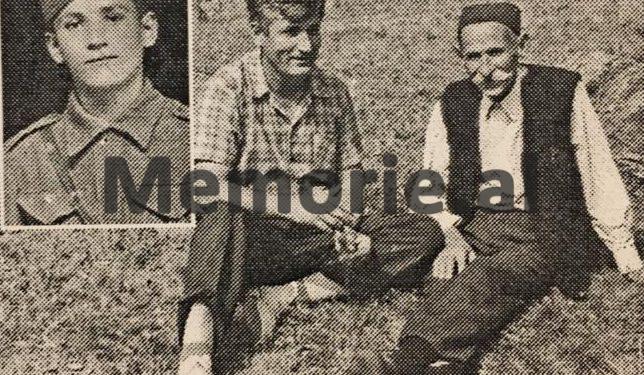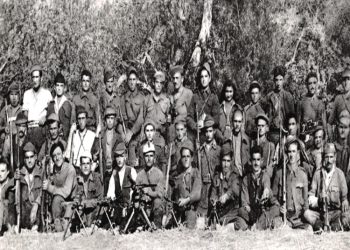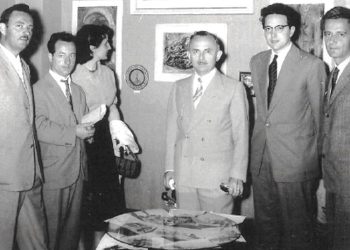Dashnor Kaloçi
Memorie.al publishes the story of Hysni Daja, former senior soldier with the rank of colonel who graduated from the military academies of the Soviet Union, who tells how in 1975, as a former partisan of the 7th Assault Brigade formed in the village of Vlushë in Skrapari in 1943, was appointed by the Albanian government and led a special mission in Yugoslavia, where the remains of 300 former Albanian partisans killed in 1945 were found in the lands of Montenegro, Bosnia and Herzegovina, Kosovo and Macedonia. How did the Yugoslav side receive the delegation from Albania and the local government bodies where they did research to find the graves, how did they help them and why shortly after they had found the remains of 300 partisans, their fellow fighters, they were ordered to leave urgently in Albania, without letting them participate in the occasion ceremony that would be organized in Podgorica…?!
At the beginning of the frosty winter of 1945, the partisan Hysni Daja from the village of Sevran in Skrapar, an effective member of the 7th Assault Brigade of the National Liberation Army commanded by Enver Hoxha and Spiro Moisiu, had never thought that those notes and diaries written after the battles there in the icy ravines between the mountains of Visegrad in Bosnia, would serve one day not only for historical statistics, but also for another much nobler thing: that of finding the remains of fallen comrades there in and foreigners. This is what the retired colonel Hysni Daja, author of several books with memories from the “National Liberation War”, only thought of at the beginning of September 1975, while together with some other friends, they hurriedly climbed the steps of a plane at Rinas airport. , to fly towards Yugoslavia, where more than 300 of the bodies of their comrades-in-arms rested under its soil for 30 years. Although at an advanced age, he had no difficulty recalling that distant event, in his interview exclusively for Memorie.al.
Mr. Hysni, what was the number of Albanian partisans killed in the lands of the former Yugoslavia?
The number of Albanian partisans killed in Yugoslavia from December 1944 to February 14, 1945, the day the city of Visegrad was liberated, was estimated at around 700 people. This figure was for our two divisions, the 5th and 6th, which under the command of Gjin Mark and Rrahman Parllak, fought there in pursuit of the German forces retreating towards Berlin. Most of those 700 partisans killed in Yugoslavia had fallen in the fighting against the Germans and only a few of them had died of various diseases.
When did the Albanian state first become interested in the bodies of Albanian partisans killed in Yugoslavia?
Since the end of the war, the interest in finding the bodies of the Albanian partisans who were killed in the territories of Yugoslavia immediately began. After the respective agreements had been made between the two states, in 1946, the Albanian state sent a special commission to Montenegro and Bosnia. From the research done at that time, as far as I know, it was possible to find about 380 bodies of Albanian partisans, who were immediately brought to Albania and buried with ceremony in the Martyrs’ Cemetery in Tirana and in other districts from it was them.
What about after the first 380 bodies were brought to Albania in 1946, did the search for the rest that had not yet been found continue?
After 1946, the search did not continue and, although our country was interested in finding other bodies that had remained there, it was made extremely difficult by the breakdown of relations between Albania and Yugoslavia. But even after 1949, as far as I know, there were continuous demands from our state, but the Yugoslav side was no longer ready, just like in 1946, making various claims.
Specifically, what claims did the Yugoslavs make?
They said that there were no more Albanian partisan troops in their lands and that those who had been, we had allegedly found them and taken them all back in 1946.
When was it possible to find other bodies of former Albanian partisans left in Yugoslavia?
In 1975, the Yugoslav state agreed and was ready for the Albanian government to send a special commission to Belgrade, in order to clarify this unresolved problem and make it possible to find the bodies of our former partisans who were in several republics of their federation. After that, our government sent a commission of 15 people to Yugoslavia, including me.
Besides you, who else participated in that commission and what did they represent?
Along with me in the composition of that commission were also Maman Saliu, Zagoll Skëndo, Rakip Peza, Shaban Rexha, etc., who had been partisans and senior military cadres with responsibility during the War and after. While half of the commission consisted of these former partisans and well-known military cadres, the rest were from the State Security and the Ministry of Municipalities.
You personally, who chose you as part of that commission and for what reasons were you picketed?
I was proposed by the member of the Political Bureau, comrade Adil Çarçani, who knew me well since the time of the War, as he had been the deputy commissioner of the Seventh Brigade. Likewise, at the same time, the proposal for me to be in that commission was also made by the well-known general, Ndreko Rino, former commander of the First Brigade. These two were the ones who proposed me to that committee and the main reason why I had to be there was quite simple. I was one of those former partisans who had kept diaries and notes since the war and then I had written many different articles in magazines and newspapers, as well as books with memories and scientific analysis from the history of the partisan war.
Who gave them the occasional instructions for the work your commission was going to do there?
For the preparation of our commission of 15 people, it took several months and we were called to several preparatory meetings, giving us the necessary instructions. At first, we received instructions from the Committee of Veterans of the Anti-Fascist National Liberation War, then from the Ministry of Municipal Affairs and finally from the Ministry of Internal Affairs.
Before you left Tirana, did you have meetings with family members and relatives of former Albanian partisans killed in Yugoslavia?
We had some meetings, but not officially organized by the state. A few days before the departure, family members and relatives of our former partisans and comrades who fell in Yugoslavia met us and gave us any information or explanation about their people who were resting there, begging us to find their remains. theirs. We kept a note of them and promised to do our best to find them.
When did you leave for Yugoslavia and what kind of reception did you receive there?
After all these instructions that I said, on September 9, 1975, our delegation left by plane for Yugoslavia and in Belgrade we were met by representatives of the Ministry of Foreign Affairs of Yugoslavia, who were in charge of Albanian affairs. After a stay of four or five days in Belgrade, we dispersed to different republics of Yugoslavia, dividing into several small groups of two or three people.
In which republics of Yugoslavia would the search for the remains be done and where were you assigned?
The searches would be carried out in Bosnia, Montenegro, Kosovo, Serbia and Macedonia. In all these republics or autonomous provinces, we had killed or left dead during the War. I was assigned to go to Bosnia, as there was the most difficult task. This is because Sarajevo said that there were no more graves of former Albanian partisans. A representative of our Ministry of Municipalities, whose name was Haxhi, was assigned to Sarajevo with me.
How were you received in Sarajevo?
We were received very well in Sarajevo and they had done a preliminary job for the reception of our delegation. An old Croatian ex-partisan named Perjo Divjak, who boasted that he had fought alongside Tito, was assigned to receive us. We held the first meeting in the Municipality of Visegrad, where its mayor received us very well and, among other things, told us: “The Bosnian people know the war fought by the Albanian partisans of the VI Division, who fought heroically against the German forces in Dričko, Zanoshnje, etc., leaving many dead”. After casual meetings with the local authorities, we began the search for the remains of our comrades-in-arms.
Where did you do your first research and how did you initially proceed?
In the surroundings of Visegrad, in those places where we had fought the bloodiest battles, such as in Driçko, Zanoshnje, Mehmet Pasha’s Bridge, etc. First, we did picket by going to the places where the graves of our comrades were located, and then the municipal workers assigned by the Yugoslav side came there, who also did the excavations to extract the bones. On the first, second and third day of our research, I was accompanied by the representative of the Foreign Ministry of Yugoslavia, in charge of Albanian affairs, whose name was Slatinec. After three days he left, telling us: “I’m leaving, but you continue the work, because I was convinced that there are still Albanian partisans killed here.” After his departure, I continued the search together with some other former comrades of mine, such as Rustem Hazizi, Rakip Xhezo and Kalo Seferi, who came those days from Albania.
Who sent them?
According to the rules that were already established in Tirana for our commission, I, as the group leader, had the right to request the arrival of other people who knew about the location of the graves of our partisans, but not every one of them could stay there more than 20 days. So, they and some others came there at my request.
How did the local people receive you and were they willing to help you in your mission?
The local people welcomed us very well wherever we went and they told us that they were very grateful for the fight we had done there. Throughout our search we were accompanied by a Bosnian driver from Dričko named Asim, who also took us to his house, following the order given by his mother. When we went there, his old mother told us that in 1945, in a place not far from their house, she had buried the head of an Albanian partisan. We went there accompanied by Asim and we really found the skull of the Albanian partisan, which we identified based on the notes we had with us. When we went to Zanoshnje, in a place called Qafë, we found two empty graves of Albanian partisans. When we asked, a Bosnian named Ibrahim told us: “They should have two graves, one here and one in Albania.” So, even though their bodies had been taken and brought to Albania since 1946, their graves had not been destroyed and were still guarded by Bosniaks just like other graves of local partisans. Likewise, in Visegrad, an old woman named Borka constantly took care of three graves of Albanian partisans, placing bunches of flowers there.
How long did your mission last and how many bodies of Albanian partisans did you find in Yugoslavia?
Our mission continued for 90 days and during that time I, as the group leader for Bosnia, found 30 graves with the remains of our comrades who had fallen martyrs there in and abroad. I have all the lists with their names and I remember Sado Zeneli from Gjirokastra, or Hysen Zenel Nurka from Sevrani i Skrapar and many others in a row. At the end of our mission in Bosnia, a memorial ceremony was organized in the city of Sarajevo in front of 30 coffins with the remains of our comrades, where we and the Bosnian side spoke and greeted. At the end of my greeting, I said: “We took the bones of our brothers and left here in the neighboring land their blood that does not become water.”
What was the total number of killed partisans that were found at that time in all the Yugoslav republics where your mission searched?
It went to about 300 people. After their remains were found and placed in coffins, they were sent to the Central House of the Yugoslav Army in the city of Podgorica, which was designated for the collection of remains to be found in Bosnia and Montenegro. Although we found the remains of about 300 of our martyred comrades in Yugoslavia, we were not lucky enough to be present at the ceremony of their return to Albania, as we were informed from Tirana to return urgently to Rinas.
Why did this happen?
I don’t know, but maybe because they thought we became too familiar with the Yugoslavs who accompanied us everywhere. I don’t know what to say more, but I am convinced that we were turned away after the malicious information brought here by the State Security, whose people were attached to our mission.
When were the remains of 300 partisans returned to Albania and who brought them?
The coffins with the remains of 300 partisans came to Albania in December 1975 and they were brought by another commission, which went to Yugoslavia after our emergency return to Tirana. Their arrival was accompanied by a grand ceremony in “Skënderbej” square, where 300 coffins were placed on the steps in front of the Palace of Culture and where the entire Political Bureau participated. After that, they were taken to the National Martyrs’ Cemetery in Tirana or other districts.
Did you receive thanks from your families when you returned to Tirana and did you feel like the “General of the dead army”?
We had many thanks from the families and relatives of whom we found the remains of their sons, but I can’t say that we felt like the “General of the dead army”, as there was a big difference with him. We belonged to a victorious army./Memorie.al





